Freshly grated lemon zest adds a rich burst of vibrant flavor to food and drink. It provides an intense citrus taste without the sour punch that you get from the fruit’s juice, pith, or flesh. You're about to learn how to zest a lemon without the need for fancy gadgets or appliances; just everyday kitchen tools that you probably already have in the drawer.
5 easy ways to zest lemons
1. Box grater method
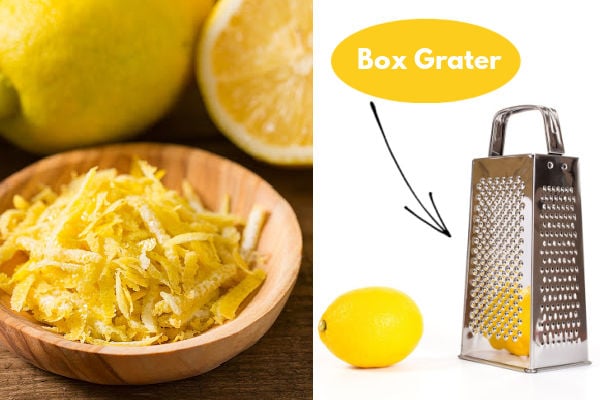 Almost everyone has a box grater at home and it makes an excellent tool for zesting lemons. Position the grater over a chopping board or large plate and hold it firmly with one hand. Grab a lemon with your other hand and slide it up and down over the grater.
Almost everyone has a box grater at home and it makes an excellent tool for zesting lemons. Position the grater over a chopping board or large plate and hold it firmly with one hand. Grab a lemon with your other hand and slide it up and down over the grater.
Avoid using the side with the large holes as the pieces of zest will be too large. Instead, opt for the small holes which will help release the oils. As the colorful yellow exterior of the skin is removed white pith will be exposed. At this point, rotate the lemon and continue until all the yellow has been removed. Use a spatula or spoon to remove any zest that gets stuck in the holes.
2. Knife method
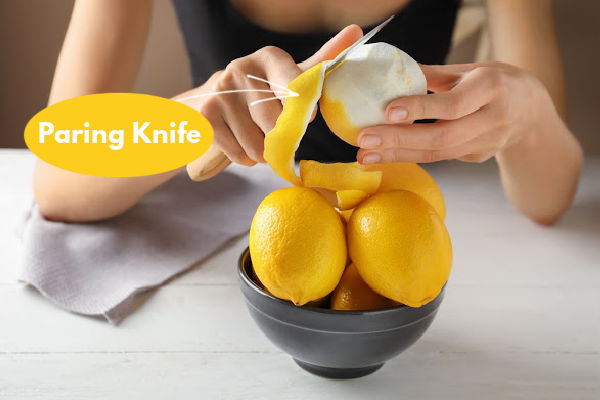 If you've got a sharp paring knife then this utensil is a quick and mess-free option for removing the zest. For anyone unsure what a paring knife looks like, then look for the smallest knife in your set. They're easy to handle and maneuver, purpose-built for removing the skin.
If you've got a sharp paring knife then this utensil is a quick and mess-free option for removing the zest. For anyone unsure what a paring knife looks like, then look for the smallest knife in your set. They're easy to handle and maneuver, purpose-built for removing the skin.
Hold the lemon in one hand and a knife in the other and begin carefully slicing the skin off in strips. Pay careful attention not to cut too deep as you don't want any of the white pith to come off. After peeling the lemon, the pieces can then be chopped into thinner bits, depending on what recipe you're using them in.
A knife method is an excellent option if you need larger decorative pieces for cocktails, pies, and even savory dishes where you will remove the lemon peel at the end of cooking. Our recipe for making homemade Drambuie calls for lemon skin and we'd recommend using a knife in this case.
3. Peeler method
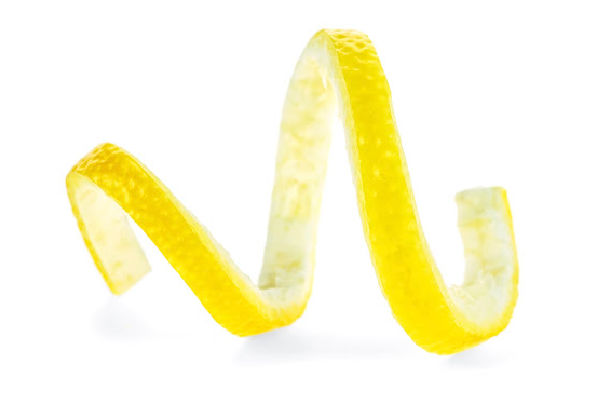 Hold a lemon in one hand and a vegetable peeler in the other. Begin peeling off slices lengthways, making sure not to peel too deeply. If the zest is for a garnish or cocktail, you may want to peel one long spiral-shaped strip by peeling around the fruit horizontally. As with the knife method, once you've cut your strips they can then be minced or chopped into thinner slices.
Hold a lemon in one hand and a vegetable peeler in the other. Begin peeling off slices lengthways, making sure not to peel too deeply. If the zest is for a garnish or cocktail, you may want to peel one long spiral-shaped strip by peeling around the fruit horizontally. As with the knife method, once you've cut your strips they can then be minced or chopped into thinner slices.
Tip: We mentioned at the start of this article that there wouldn't be any fancy tools required. But if you frequently zest lemons or you need to process a lot of fruit then an electric potato peeler is a fantastic option and will make your life much easier. If this appliance interests you, then be sure to check out our in-depth review of the best electric potato peelers. You’ll be able to find a suitable model for your needs. .
4 Microplane method
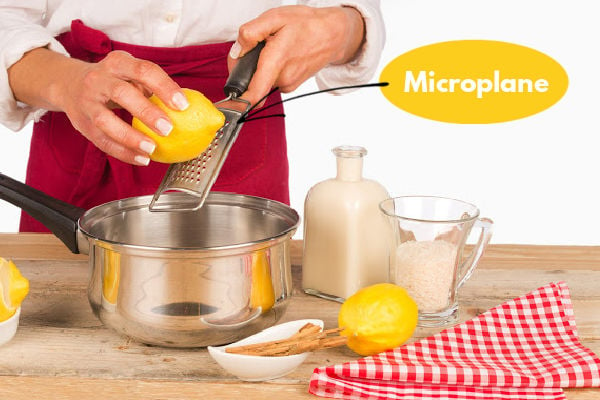 A microplane is a useful kitchen tool that looks a lot like a grater, but it can shave a lot more finely. The other major difference is that a grater usually sits on a cutting board while a microplane is held in the air during zesting. We don't recommend this option for younger kids because they're very sharp and will make quick work of removing human skin.
A microplane is a useful kitchen tool that looks a lot like a grater, but it can shave a lot more finely. The other major difference is that a grater usually sits on a cutting board while a microplane is held in the air during zesting. We don't recommend this option for younger kids because they're very sharp and will make quick work of removing human skin.
To use a microplane, hold it in one hand and run the side of the lemon over the holes until the yellow skin is grated off. Slowly rotate the lemon until all the rich zest has been removed. The benefit of this tool is that you can zest the skin straight into the food you're cooking. This is a quicker process and there's less washing up.
The downside of a microplane is that it can get a little messy with bits of shred flying everywhere. If you want a tool that's built for zesting but rests on the bench for more stability you may want to consider investing in a Japanese grater. They are easier to use and very effective for zesting citrus fruit or finely grating fresh spices like ginger.
5. Zester and channel knife method
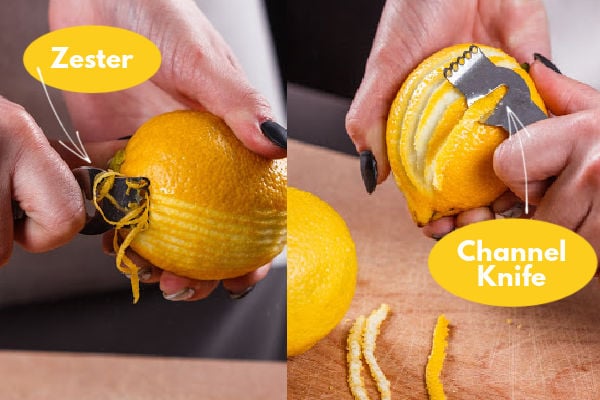 A zester is a utensil that allows you to scrape thin, even shreds of zest that are thicker than what you would get from a microplane. To use a zester, simply run the holes at the end of the tool over the surface of a lemon. Slowly work your way across the entire lemon until all the yellow zest has been extracted.
A zester is a utensil that allows you to scrape thin, even shreds of zest that are thicker than what you would get from a microplane. To use a zester, simply run the holes at the end of the tool over the surface of a lemon. Slowly work your way across the entire lemon until all the yellow zest has been extracted.
Some citrus zesters come with a handy channel knife or canele cutter. This extremely sharp blade will allow you to produce decorative twists that look amazing in cocktails or as a garnish on desserts. If you want to make a perfect lemon twist, then wrap strips of peel around a drinking straw and secure with pins at each end. After an hour you will have perfectly shaped lemon twists for adding to cocktails.
Video explaining lemon zesting
Tips for zesting lemons
- Whatever technique used for zesting, never dig in so deep that you cut out the pith or flesh.
- Zested lemons don't need to be discarded, instead, they can be juiced immediately or wrapped in cling wrap and refrigerated or frozen until required.
- If you decide to use a grater then cover the holes with plastic wrap before grating to stop the lemon from getting stuck in the holes.
- If you have a lot of lemons, then zest a bulk load and stir it into sugar for adding to frostings and drinks. Alternatively, add the zest to softened butter and use for topping salmon, steak, or roasted vegetables.
How to store lemon zest
To store lemon zest, simply add it to a freezer bag or airtight container and freeze for up to three months. When it comes time to use it, you can add it frozen to food like soups and stews for a healthy flavorful ingredient.
What lemons are best for zesting?
Organic or freshly picked lemons from the tree are the best for zesting because they have no wax covering. Some organic lemons will have a beeswax coating which can easily be washed off in hot water.
Regular lemons from the supermarket will usually have a wax coating to make it look more appealing on the shelf and to help preserve the fruit. To remove this coating add the fruit to a colander and pour a jug of boiling water over them before scrubbing the fruit clean. Give them a thorough dry with a tea towel before zesting.
Summing up
Zesting a lemon is quick and easy but well worth the effort. The best tool for the job will depend on what you are using the zest for. A microplane, grater, or zester are excellent for producing finely grated skin which you can add to baked goods, desserts, and food where you don't want too much texture.
A paring knife is useful for quickly slicing larger pieces that you can easily remove at the end of cooking. For fancy cocktails and decorative garnishes, we recommend investing in a zester with a channel knife; this will make quick work of creating impressive lemon spirals.
What is your favorite recipe that uses lemon zest? Please let us know in the comments below.

Leave a Reply